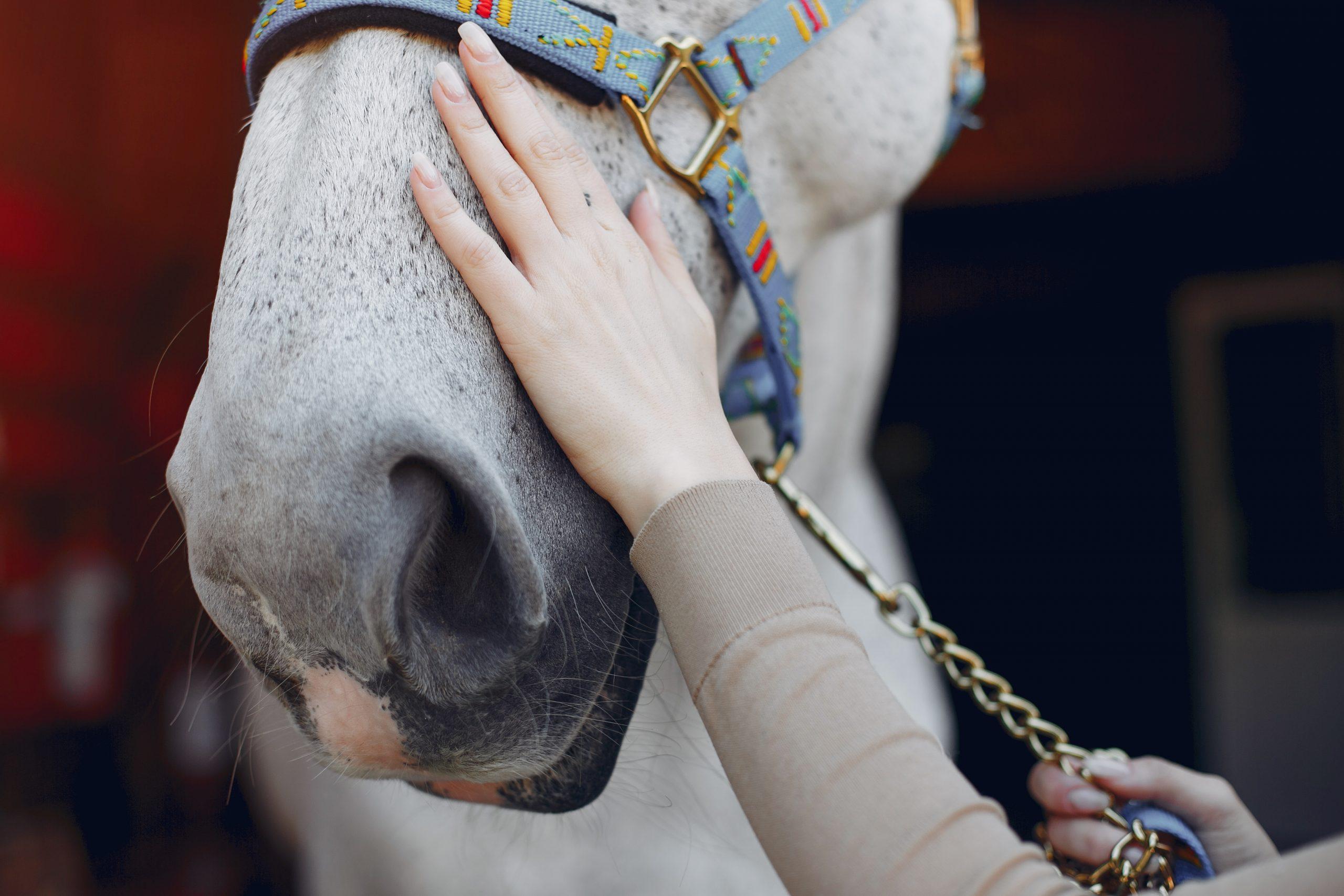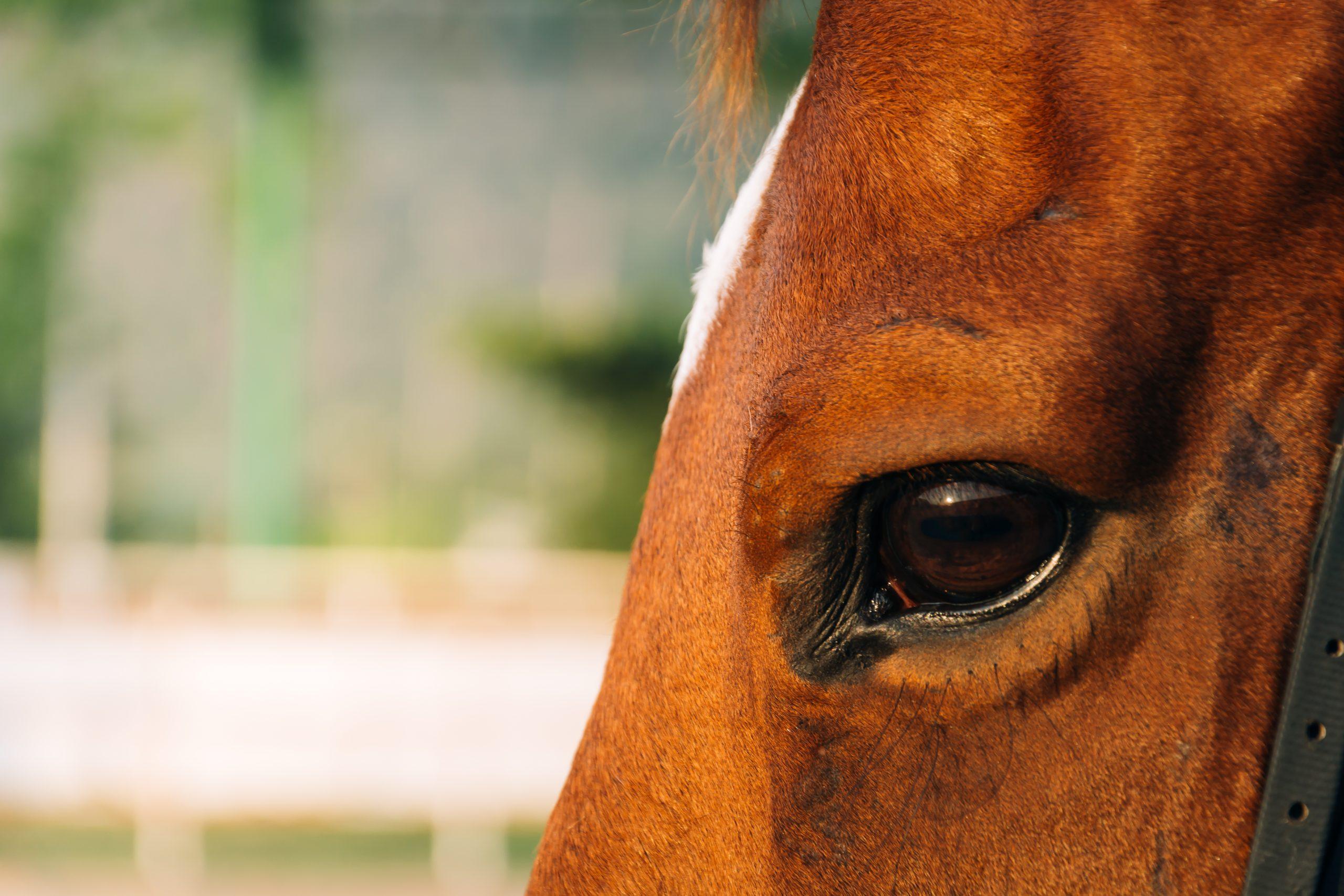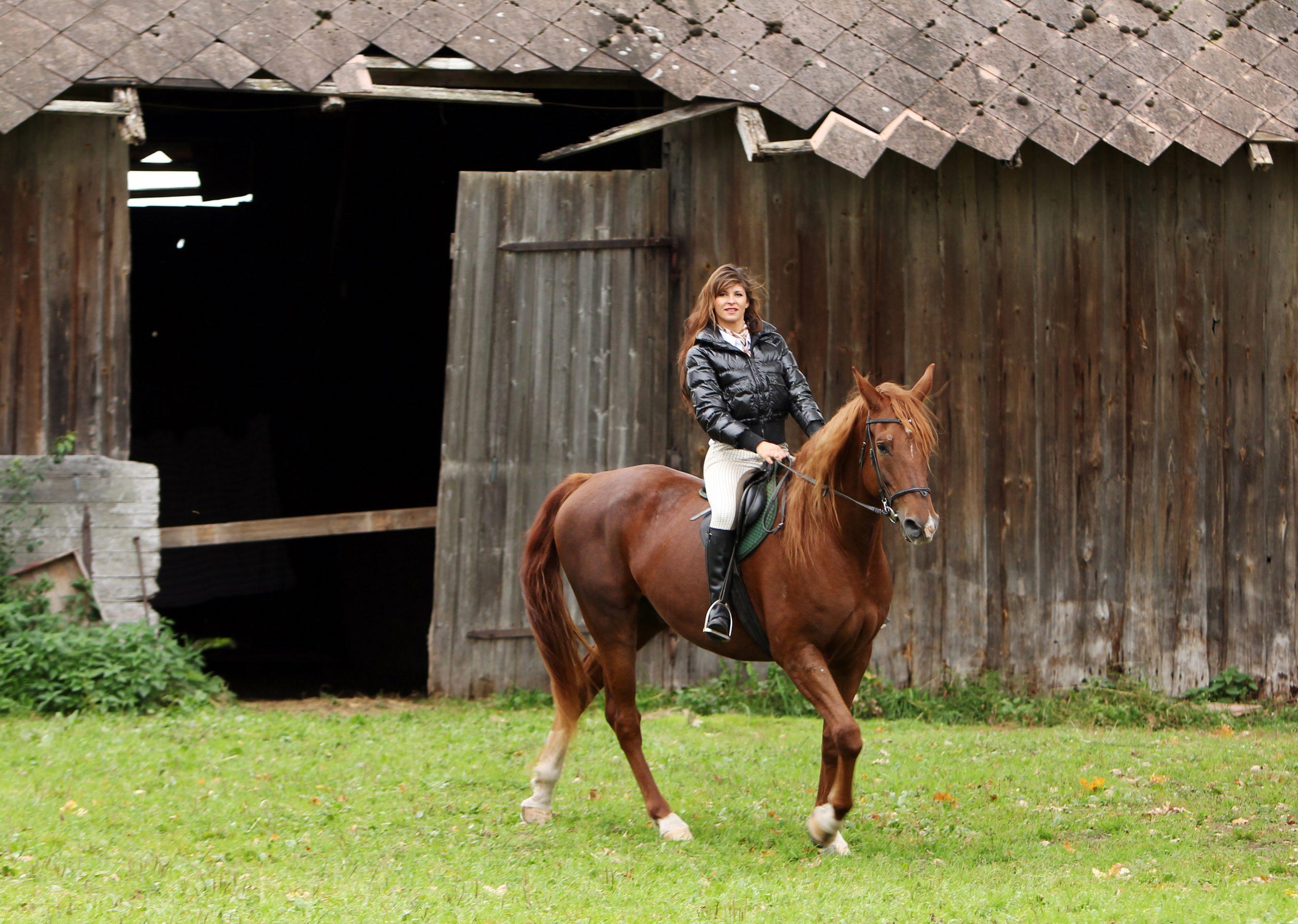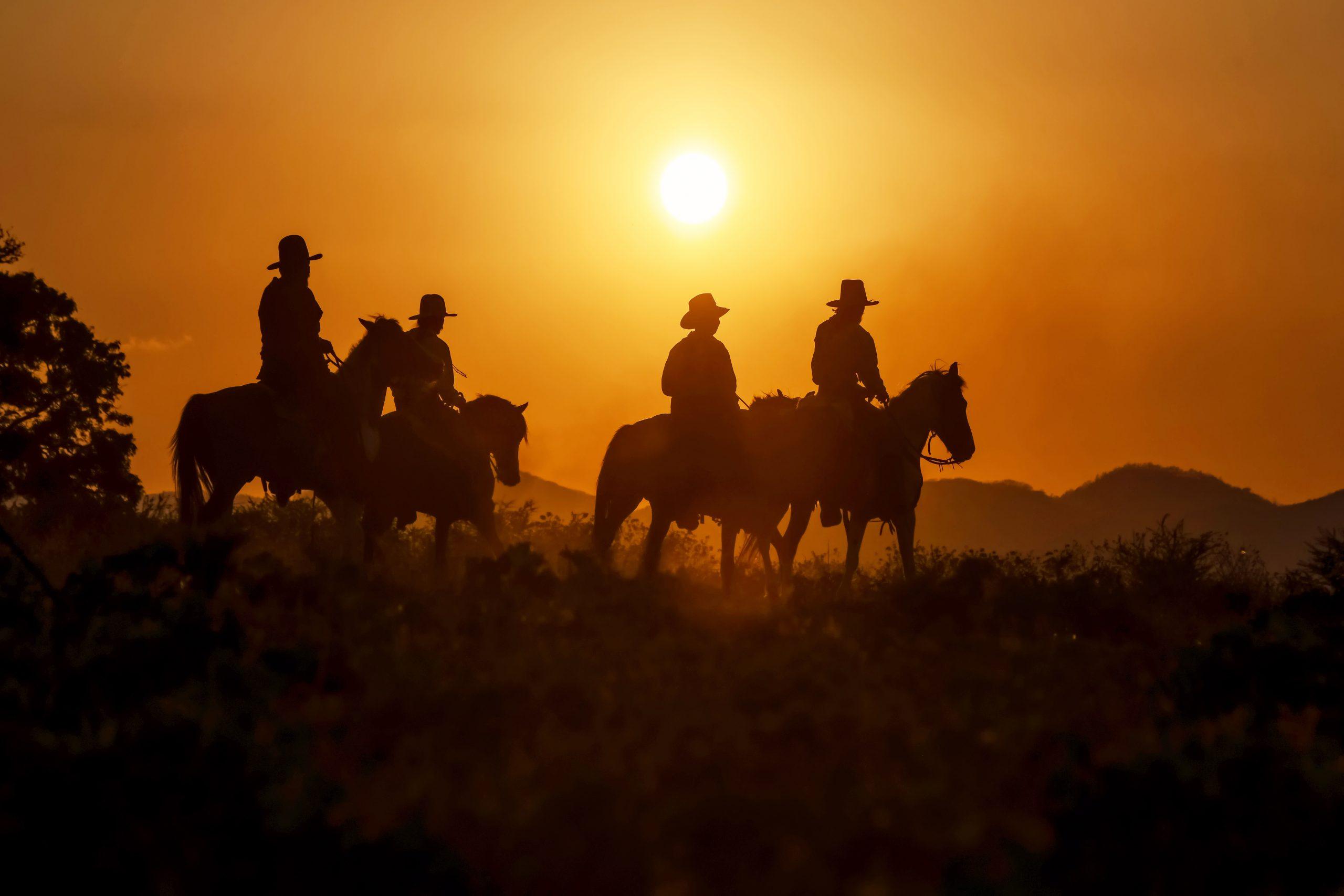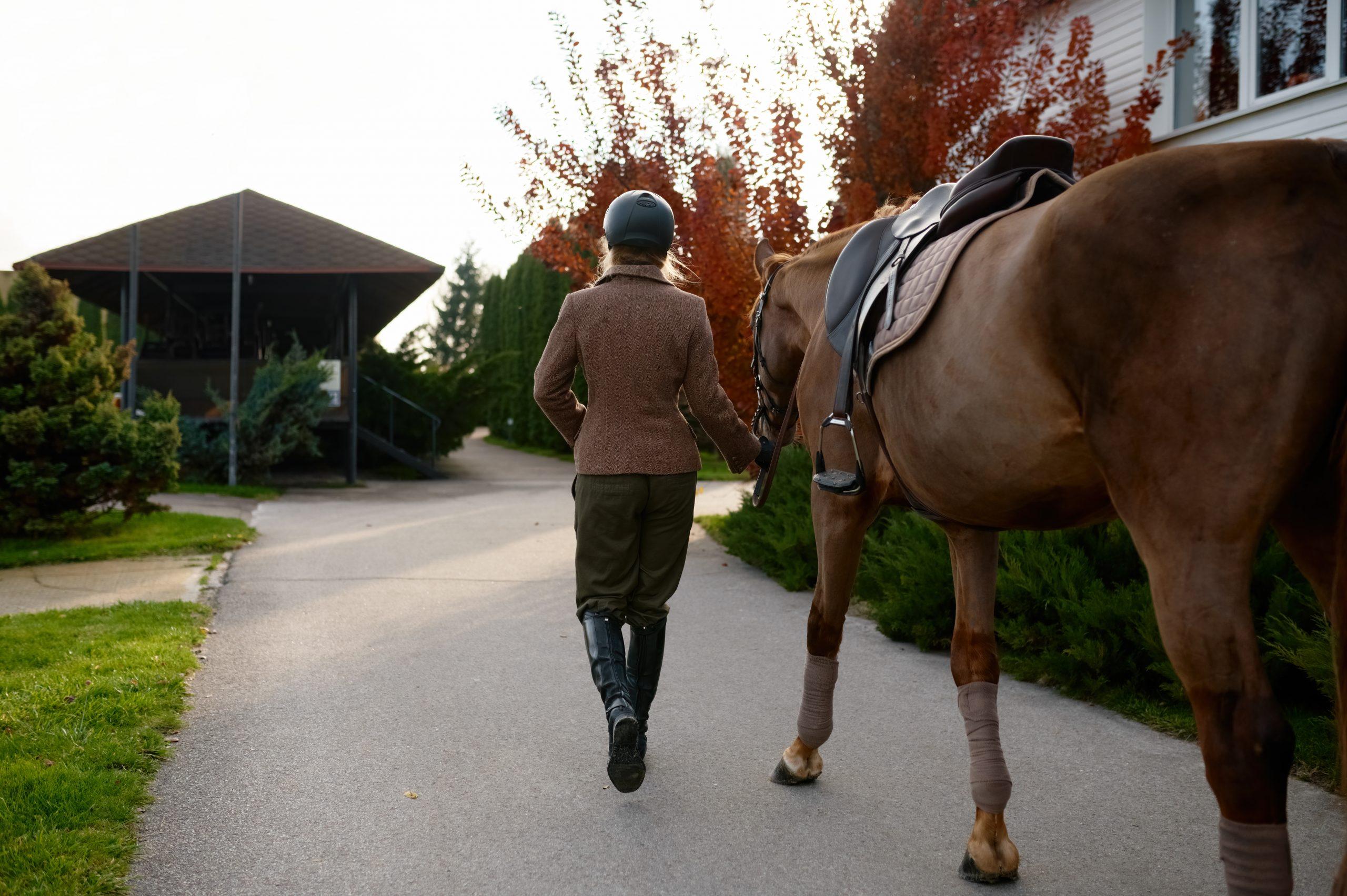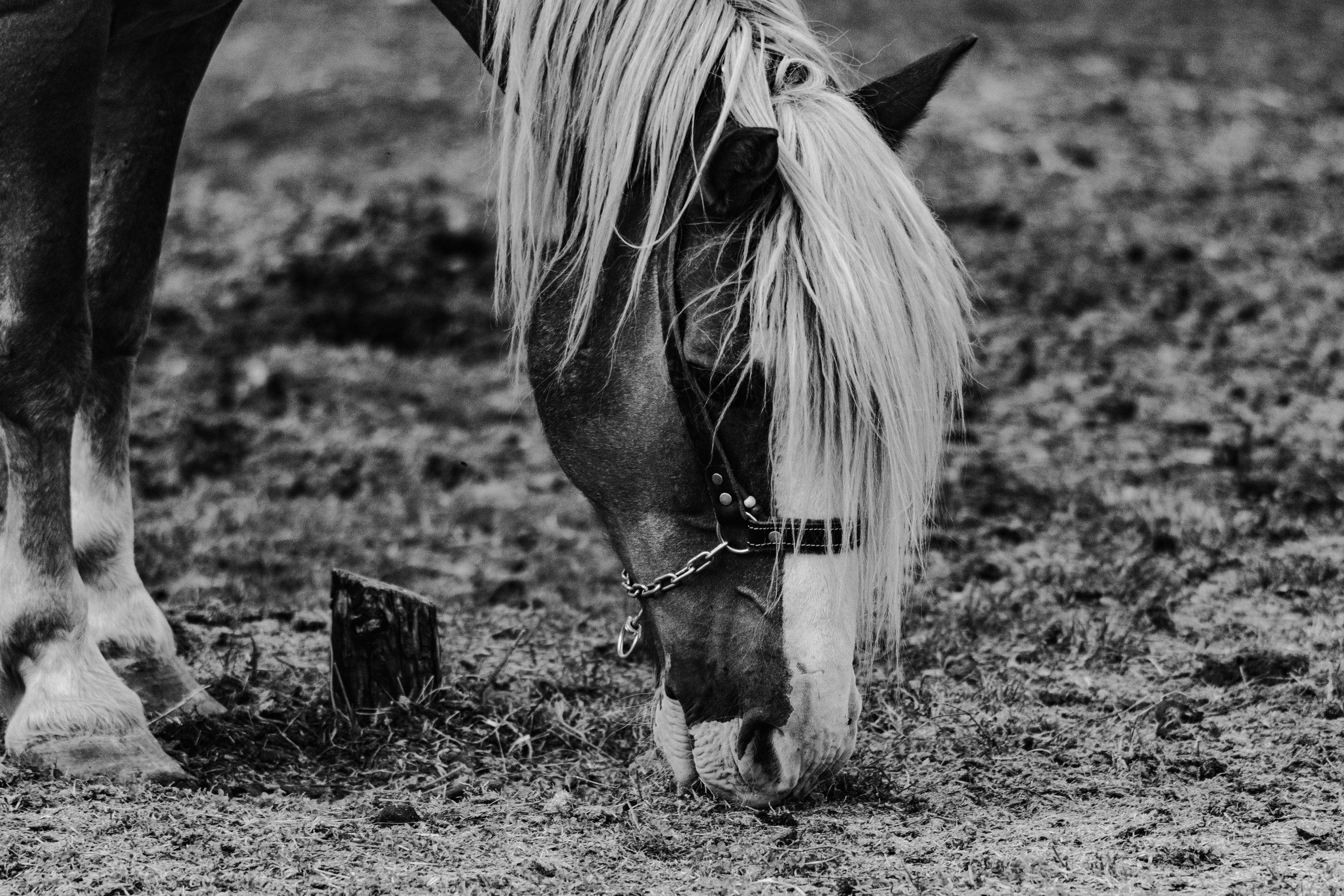Introduction to Horse Riding Costs
Horse riding is an enjoyable and engaging activity that offers a unique experience. The cost of horse riding varies depending on several factors such as the type of lesson or trail, location, and quality of equipment used. Understanding the introduction to these costs can help in making informed decisions.
Horse riding classes are one aspect that contributes to the overall cost. Private sessions are pricey compared to group lessons, with prices ranging from $60-$150 per hour. Additionally, trail rides usually cost between $30 – $100 per hour based on different facilities and locations.
Horse leasing is another way to enjoy equestrian activities at a more affordable price than buying or owning a horse. Leasing costs range from $200-$1,000 monthly. Moreover, additional costs may come up when considering the insurance requirements for both horse and rider.
Surprisingly, many people are unaware that horse care expenses go beyond regular riding fees; this includes veterinary care, medication expenses & additional supplements costing on average $3-7k yearly.
In retrospect, despite being an enthralling experience, it’s essential to consider horse riding expenses comprehensively before making any commitments. Building contingencies into your budget is vital for enjoying horse-riding without breaking your finances unexpectedly! Horse riding costs can be affected by factors such as the horse’s breed, rider’s experience, and how good you are at pretending you’re not scared of a 1,000 pound animal.
Factors Affecting Horse Riding Costs
To understand the factors that affect horse riding costs in detail, you can explore the following sub-sections: horse riding lesson costs, horse boarding costs, and equipment costs. Each of these elements contributes to the overall expense of horse riding, but by understanding their individual costs, you can optimize your budget and experience.
Horse Riding Lesson Costs
The expenses for equestrian instruction can differ depending on several factors. The level of skill, the instructor’s credentials, the type of lesson and geographic location contribute to the costs of horse riding lessons. Additionally, the cost of boarding horses and purchasing necessary gear can also add up.
As one progresses in their horseriding journey, the expense tends to increase in light of specialized techniques required improving their skills. Many qualified instructors offer programs for competitions that come with additional fees as well. Therefore, it is important for prospective riders to carefully consider these additional charges while weighing their options before committing to a particular instructor or stable.
It is important to note that some stables may have lower monthly fees but still have sky-high hidden costs when you show up at a lesson on a less expensive horse than what was agreed upon. According to HorseRider.com, the average cost for an hour-long group session starts from $40; however this cost varies tremendously depending on several aforementioned factors.
Why learn horse riding in a group when you can pay extra to fall off in private?
Private Classes
For individualized training, the cost of private horse riding instruction is subject to several factors. This includes the level of expertise, amount of time, and frequency of lessons. Private classes can also be arranged where students can ride school horses as it lowers the overall cost.
Hiring an experienced trainer who caters to individual learning needs for horse riding can be expensive than a group lesson. The amount of time spent in class will affect the total cost as well because longer classes will entail a higher hourly pay for instructors. At times, certain students prefer having multiple courses per week for quick progress which raises the overall fee.
It’s worth researching before choosing an instructor or facility as sometimes hidden fees lurk within contracts requiring additional costs such as equipment rental and horse grooming.
A few years back, my friend hired a trainer for private lessons but was unaware that his contract’s fine print contained an extra charge for booking nearby local travel expenses during sessions with horses and equipment exceeding three hours each day. Ultimately he had to find another trainer paying less travel expenses by choosing other facilities with ample space available for daily practice sessions instead of being affiliated with one’s residing establishment.
Finally, a chance to show off my mediocre horse riding skills in front of strangers.
Group Classes
Group Training Sessions
Group riding lessons are an affordable way to learn essential horse riding skills while socializing with others who share the same passion. Here are five points in the context of group training sessions:
- Group riding sessions usually cost less than individual lessons.
- Under expert supervision, riders can learn from each other’s mistakes and motivate one another to excel.
- The dynamic atmosphere of a group lesson helps build camaraderie and has positive effects on individual confidence levels.
- Participants must adhere to schedules since classes run at certain times and dates with limited availability.
- Since riders in a class will have varying skill levels, trainers may occasionally split groups up into sub-groups, making it a highly personalized experience.
For instance, you may often meet beginners’ equestrian enthusiasts more comfortable learning new skills in these types of semi-private setups.
If you’re serious about improving your riding ability and want to take advantage of reduced costs associated with group training sessions, then book ahead as slots fill up often. Furthermore, committing is the key to reap long-term benefits such as building trust between you and your horse. It would be best not to miss out on this fantastic opportunity and experience the thrill of horseback riding!
Semi-private classes, because sharing the cost of falling off a horse with someone else just makes financial sense.
Semi-Private Classes
Semi-Private Instructional Horse Riding
Semi-private instructional horse riding classes are an optimal way to learn riding skills, where you share the class with one other participant. The cost of these sessions is generally more than group lessons but less than private ones. This gives participants more individual attention from instructors without the high cost of a private lesson.
The semi-private classes provide a broad range of benefits: students can receive guidance on their individual needs, work on specific goals and have uninterrupted riding time. In addition, since only two riders share the session, there is minimal disruption and wait times which results in maximized learning opportunities.
It’s essential to allow plenty of time for observation while attending semi-private classes. Observing others who ride alongside you offers insight into vital techniques needed for proficient horse riding; therefore maximizing your knowledge and aptitude in horseback riding.
Pro Tip: Participating in horse-riding clinics provides excellent opportunities for riders to gain new skills, practice techniques and learn under experienced instructors away from their routines.
Owning a horse can be expensive, but boarding fees can make you feel like you’re the one who’s been put out to pasture.
Horse Boarding Costs
Horse accommodation expenses affect the overall cost of horse riding. The following are some factors that contribute to these costs:
- Location and climate conditions – Boarding expenses may be higher in urban areas compared to rural locations. Moreover, seasonal changes and varying weather patterns may increase or decrease costs.
- Type of boarding – The type of boarding arrangement you choose can significantly impact the price tag. Self-care, partial board, and full board options exist with varied prices.
- Facilities offered – Stables that offer top-notch facilities such as indoor arenas, wash racks, round pens, and trail access tend to charge higher fees for services.
- Horse age and health status – Older horses typically require additional care compared to young and healthy ones. This may translate to higher maintenance costs.
- Expertise level – Boarding costs can differ based on the experience levels of staff who oversee horse care and management.
- Additional Services – Horse accommodation establishments provide additional services like vet checkups, grooming services, feed supply, or extra room at an added cost.
It is noteworthy that insurance premiums and veterinary bills remain distinct from horse boarding charges.
An interesting fact about this topic is that “The American Horse Council Foundation reports that approximately 38 million households in the United States have an affinity for horses”.
Full boarding: when your horse gets better care than you do at an all-inclusive resort.
Full Boarding
The cost of full boarding, which includes stabling and regular feedings, can vary based on several factors:
- The location of the stable can impact the costs significantly. For instance, a stable located close to an urban area may charge higher fees than one in a rural area.
- The type of horse and its needs play a crucial role in determining full board expenses. A larger horse with unique dietary requirements will likely result in additional costs.
- The services included in full board are also essential; some stables may provide grooming or training services for an extra fee.
To reduce your costs when opting for Full Boarding, consider placing your horse in a more rural location or finding a stable that offers fewer but more affordable services for your horse’s specific needs.
If you’re looking for a half-hearted commitment to your horse, go for partial boarding – it’s like a lukewarm cup of coffee, but for equine care.
Partial Boarding
Partial horse boarding is a popular option for horse owners who want to maintain the health and well-being of their horses while saving costs. This type of boarding offers various benefits compared to full-time boarding, including flexibility and reduced expenses.
- Owners are required to do some chores, like feeding, grooming, or stall cleaning.
- Horses receive care from the facility on a part-time basis.
- The cost of partial boarding is often more affordable than full-time boarding.
- Owners have more control over their horses’ health management.
- Partial boarding offers flexible scheduling options that suit different owner’s needs.
In addition, partial horse boarding provides the opportunity for owners to bond with their horses and develop a stronger relationship. This option allows owners to take an active role in their horse’s daily life, providing them with much-needed exercise and care.
If you’re looking for an affordable way to keep your horse healthy without breaking the bank, consider partial horse-boarding. It’s a budget-friendly option that gives you the chance to interact with your horse while keeping them healthy and happy. Don’t miss this great opportunity!
“Riding a horse without proper equipment is like going into battle without armor – it’s not going to end well for anyone involved.”
Equipment Costs
Equipping for Horse Riding Expenses
The cost of equipment is a significant factor in horse riding expenses. Saddles, bridles, boots, grooming items, and protective gear are some necessary purchases required for riding. Depending on the frequency and duration of rides, the total equipment cost may vary.
Buying quality tack and gear is advisable as they can last long and serve efficiently. However, it demands high initial investment costs. Furthermore, investing in appropriate clothing like helmets and safety vests will increase the total expenditure.
Consider buying second-hand items to cut down costs or borrow from others until you’re committed enough to make substantial investments. Moreover, maintenance of equipment can significantly reduce repair or replacement expenses.
Pro Tip: Prioritize necessary items while buying new equipment for efficient management of horse riding expenses.
Looks like the real horse power isn’t in the mane and tail, but in your wallet when it comes to tack costs.
Tack Costs
Tack, the unique equipment used for horse riding plays an essential role in determining horse riding costs. From the saddle to reins, stirrups and girths or breastplates, tack is an important aspect of horse riding, responsible for providing comfort and stability to both the rider and the horse. Different materials and designs come at various prices that can impact overall costs.
Why spend a fortune on horse riding clothes when you can just wear your old Halloween costume?
Clothing Costs
Wearing the Appropriate Horse-Riding Attires
Horse riding is not only an exciting and enjoyable activity, but it also requires specific gear to ensure safety and comfort. Here are five points to consider when talking about clothing costs significant to horse riding:
- High-quality helmets, which come in a wide range of prices, are an essential part of any horse rider’s gear.
- Properly fitting boots with a low heel help keep riders’ feet securely in place in the stirrups.
- Riding gloves help prevent blisters and improve grip on the reins.
- Jodhpurs or breeches provide comfort, flexibility, and better adhesion to the saddle than regular pants.
- A reliable sports bra can make all the difference for women riders.
It is worth noting that proper apparel can positively impact a rider’s experience. Comfortable clothes that allow mobility make it easier to communicate with the horse while reducing injury risks.
Wearing proper attire is not just beneficial in terms of safety—it can also look sharp! As riders become more advanced, they may start participating in competitions. Taking the time and investing in show-worthy horse riding equipment shows a level of appreciation for the sport.
In a true story, former Olympic competitor William Fox-Pitt fell off his horse during an event. Because he was wearing protective gear—specifically, his helmet—he walked away from what could have been catastrophic injuries relatively unscathed. This is an example of how appropriate clothing costs can save lives and prevent terrible accidents from happening.
Be prepared for more than just the horse to take your wallet for a ride with these hidden costs in horse riding.
Hidden Costs in Horse Riding
To fully understand the costs associated with horse riding and avoid any unpleasant surprises, you need to be aware of the various hidden expenses that come with it. In order to help you with that, we bring you the section on ‘Hidden Costs in Horse Riding’. This includes three sub-sections: ‘Pre-Riding Costs’, ‘Medical and Wellness Costs’, and ‘Competition Costs’.
Pre-Riding Costs
Investing in Equestrian Riding
The equine industry is both rewarding and costly. Before even strapping on the boots and mounting a horse, there are many necessary expenses to take into consideration.
- One must have suitable riding attire and equipment. This includes riding helmets, boots with heels, gloves, crop sticks, whips, and saddlery.
- Riders need transport for not just themselves but also their faithful steeds. Trailers or horseboxes will need to be bought or rented to get horses from A to B.
- Weekly lessons are recommended, for not only improving riding skills but also mastering management and caring of your horse.
It may come as a surprise that owning a horse is not always an essential part of equestrianism. Many students choose the route of leasing a horse to get acquainted before taking on the responsibility of ownership. With additional costs such as feed supplements, veterinary fees- treatments and vaccinations included – it’s understandable why owning an animal may be put off until adequate finance is available.
Before I started riding at stables in my district, research conducted yielded few results regarding costs involved in equestrian riding; it was only through experiencing it myself that I fully realised the amount of investment required before I could saddle up.
Riding horses may be good for the soul, but it’ll also break the bank – especially when it comes to medical and wellness costs.
Medical and Wellness Costs
Maintaining the health and well-being of your horse is crucial in horse riding. However, the costs associated with veterinary care, supplements, and proper nutrition can add up quickly. The financial burden of keeping your horse healthy should not be overlooked and requires careful consideration.
In addition to routine check-ups and preventative care, unexpected medical expenses can arise from injuries or illnesses. These unforeseen costs can result in a significant strain on your budget if you do not have adequate insurance coverage.
It’s essential to prioritize your horse’s wellness needs by investing in proper nutrition and quality supplements. Being proactive about maintaining their health can prevent costly medical treatments down the road.
Avoid falling into the trap of underestimating the potential expenses associated with owning and riding a horse. By taking a holistic approach to your horse’s health, you can avoid unnecessary expenditures while ensuring they receive the best possible care.
Don’t let hidden costs catch you off guard – make informed decisions about your horse’s welfare to ensure both of you have a safe and enjoyable ride.
Competing in horse riding is like buying a lottery ticket, except instead of winning money, you win a fancy ribbon and a hefty bill.
Competition Costs
Horse riding competitions involve various costs that are often overlooked. Apart from entry fees and transportation, there are also expenses on attire, equipment, and stabling. These costs can add up quickly and result in a significant expense for riders and their families.
Moreover, the level of competition also affects the costs involved. Riders at higher levels may require specialized equipment and coaching, which can be expensive. Additionally, the need for practice and training sessions can increase costs considerably.
It’s essential to consider these hidden costs before deciding to participate in horse riding competitions. It is critical to have a clear understanding of the budget and plan out expenses beforehand to avoid any financial burden later on.
According to a survey conducted by Horse Network, 72% of equestrians stated that they had exceeded their equine budget at some point. Therefore it is imperative to assess all the potential expenses before participating in any competition.
Saddle up for some savings with these tips on cutting down horse riding expenses.
Ways to save on Horse Riding Costs
To save on horse riding costs, explore ways like discount deals, DIY horse care, second-hand equipment, and co-ownership with others. These sub-sections have their own unique ways to economize on your horse riding experience, without sacrificing quality and enjoyment.
Discount Deals
Horse Riding Discount Offers
Saddle up for savings! Here are some ways to avail the best discount offers on horse riding:
- Check for seasonal discounts offered by stables and riding schools.
- Look for package deals that may include lessons, rides or both.
- Join a members club- they occasionally offer exclusive discounts to members.
- Sign up for email alerts from stables, schools and membership clubs so you don’t miss their latest discount offers.
- Try booking in advance-you may get an early bird discount
Moreover, there are sometimes hidden discounts such as those provided when you refer friends or family. Make sure to ask your stable if any such discounts exist.
Your horse riding experience doesn’t need to be expensive. Take advantage of these smart investment tactics and save money while experiencing the thrill of this exhilarating activity!
Don’t miss out on these incredible saving opportunities! Start keeping an eye on emails from riding schools, stables and other professionals today!
Who needs a fancy stable when you can DIY horse care and just let your horse sleep in your bed?
DIY Horse Care
Managing your equine’s needs are often expensive. To reduce such costs, take on do-it-yourself horse care practices. Regular grooming and hoof maintenance, along with monitoring food intake and health signs can drastically decrease vet bills.
Not only can DIY horse care save money, but it also allows for increased bonding with the animal and improved overall understanding of its unique characteristics and habits. Monitoring feed type and consistency, assessing manure quality, checking for any wounds or injuries are all part of having a better understanding of your equine companion.
Additionally, performing regular dental exams and keeping up-to-date on vaccinations may also result in long-term financial savings as they help prevent serious medical issues from developing in the first place. According to the American Veterinary Medical Association (AVMA), dental disease is one of the most common problems seen in horses, so regular dental checkups should be taken into account in DIY Horse care practices for preventive measures.
Riding a horse is expensive, but buying second-hand equipment is a stable investment.
Second-Hand Equipment
For Economical Horse Riding – Gently Used Gear
If you are looking to save money on your horse riding hobby, purchasing second-hand equipment is a viable option. Here are some points to consider when buying gently used gear:
- Check for any defects or signs of wear and tear before making the purchase.
- Look for deals at local tack stores and online marketplaces.
- Consider buying from a reputable source or seller.
- If purchasing online, ask for detailed photos and information about the item’s condition before making a decision.
- Invest in high-quality gear that will last longer and has good resale value.
- Sell your own gently used gear to offset the cost of new purchases.
Another benefit of purchasing used equipment is that it can come with specific details or enhancements that may be of use to you.
It’s interesting to note that High-end riding gear companies like Kingsland Equestrian often donate used equipment and apparel to equine charities for resale.
Get the thrill of horse ownership without the full price tag by opting for co-ownership – because two wallets are better than one.
Co-ownership
Joint Horse Riding Ownership: Sharing the Cost and Joy
Sharing horse ownership with another individual to split costs, time, and responsibility is a practical way of easing individual horse riding expenses.
- With Co-ownership, individuals can split horse-related costs, such as veterinary bills, feeding expenses at the stable or paddock — keeping costs low.
- Schedules can be coordinated with another co-owner who can supervise or exercise the horse on days when it may be difficult to get to the stables resulting in reduced cost and time management.
- The sharing system promotes an opportunity for socialization among owners and their families attending equestrian events together. Additionally, an opportunity for advancement in knowledge on saddle skills.
Notably, managing personalities and logistics must work efficiently for relationships between joint ownerships.
One example of successful joint ownership is Katy and Trinity’s story. Both shared in breeding an Arabian mare. After months of waiting with baited breaths and constant check-ups with their Vet on foal progress – a beautiful filly was born; they named her Skye. They agreed that both would receive equal shares of all expenses associated with raising Skye up until she turned two years old where she was sold for 15k – The funds equally split between them.
Remember, the only thing more expensive than horse riding is therapy – and at least with riding, you get to wear a helmet.
Conclusion: Understanding True Horse Riding Costs
Understanding the Actual Expense of Horse Riding:
Horse riding is an expensive sport that requires a substantial investment of both time and money. From purchasing the necessary equipment to paying for professional training, there are various costs associated with horse riding.
In order to become proficient in horse riding, one must invest in lessons, gear, horse care and stable facilities. Despite the high costs, the benefits of recreational horse riding are incomparable.
In addition to conventional expenses like buying a new saddle or hiring a trainer, more hidden costs include regular veterinary checkups and ongoing maintenance of paddocks. These true expenses can add up quickly if not properly budgeted.
Considering all the factors involved in horse riding costs, it’s essential that individuals explore their options thoroughly before committing their hard-earned assets into this activity. It’s always prudent to seek professional advice before making such substantial investments.

